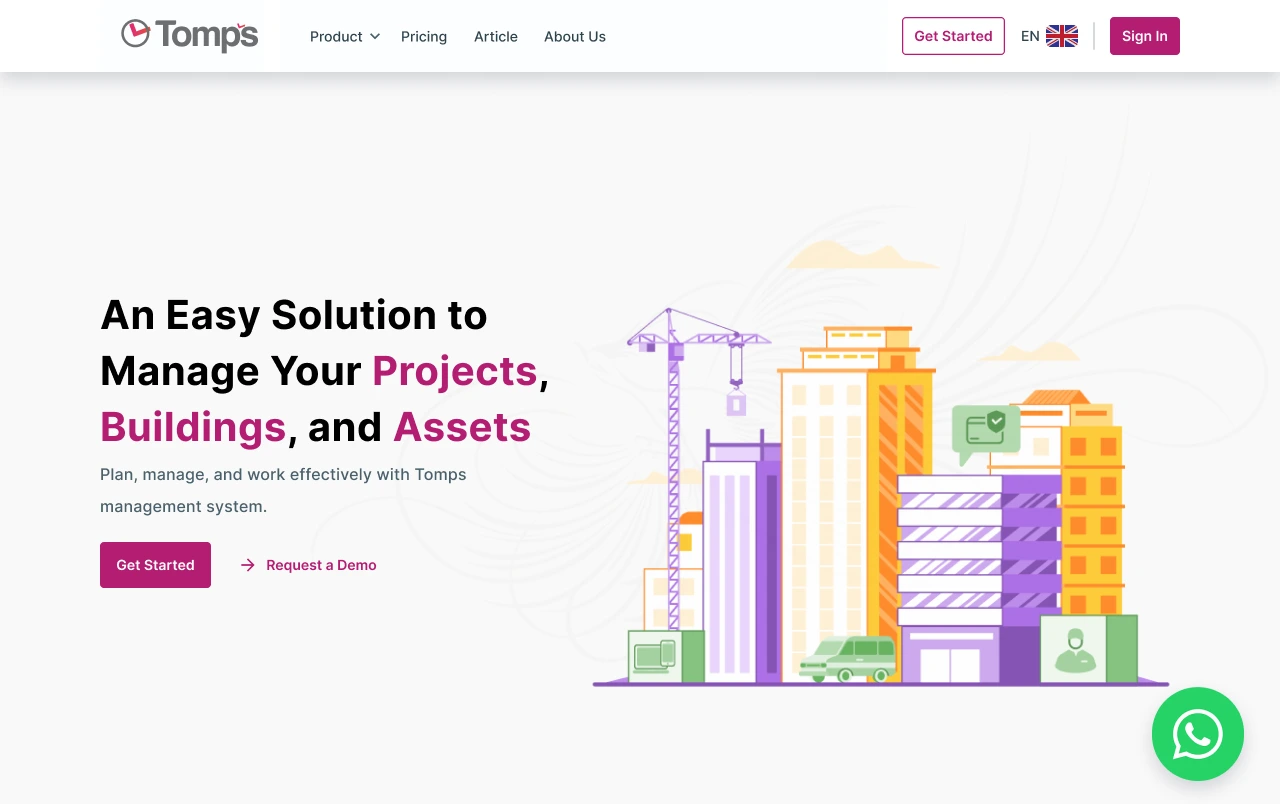
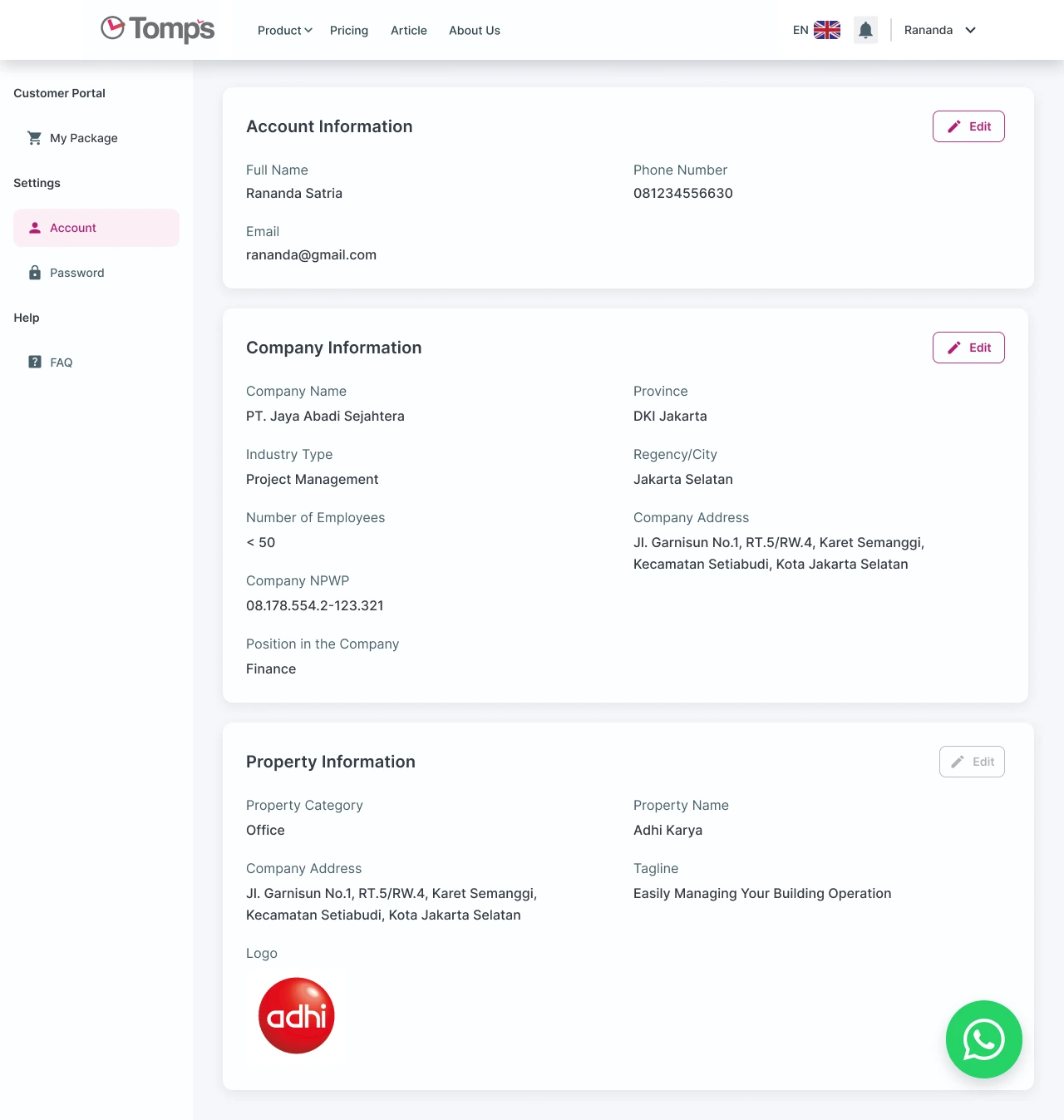
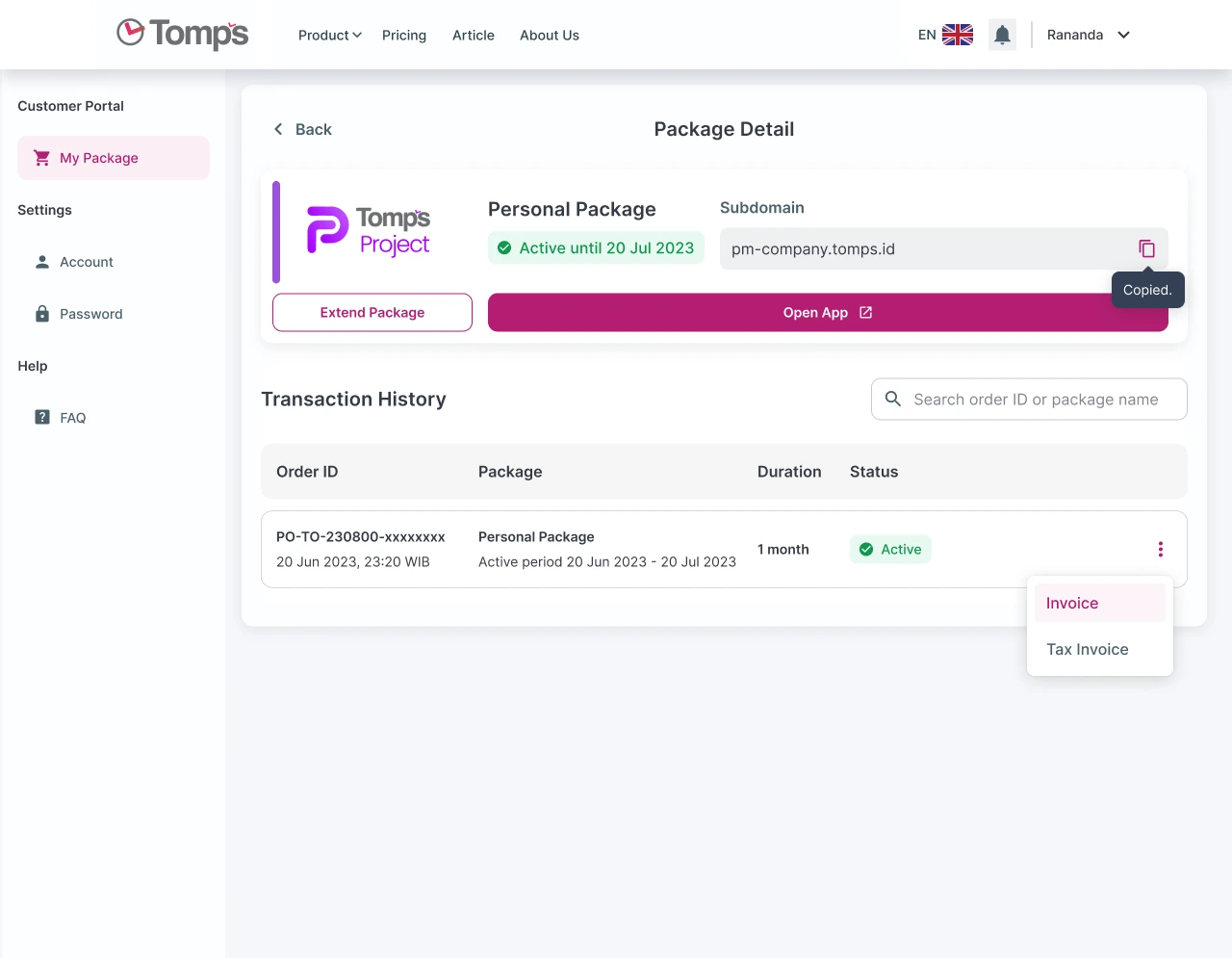
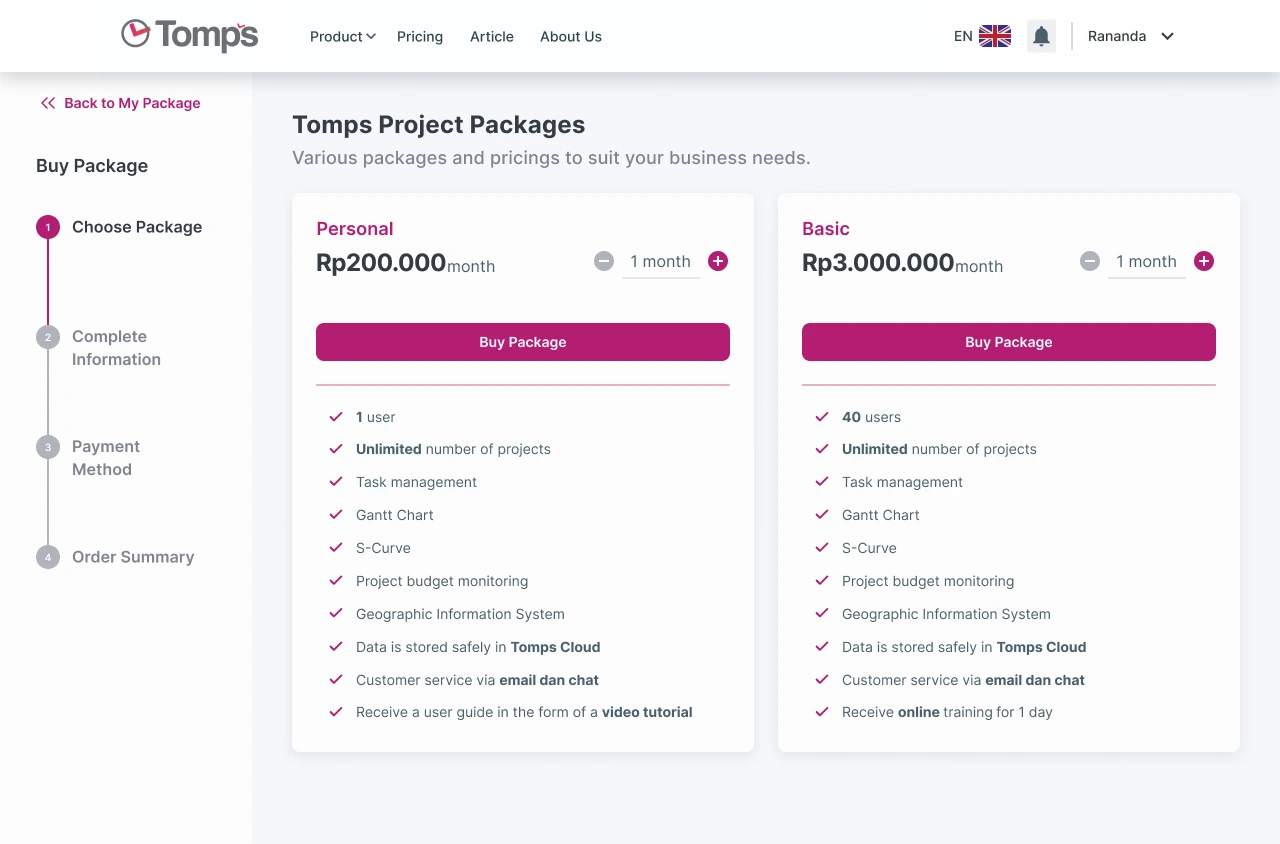
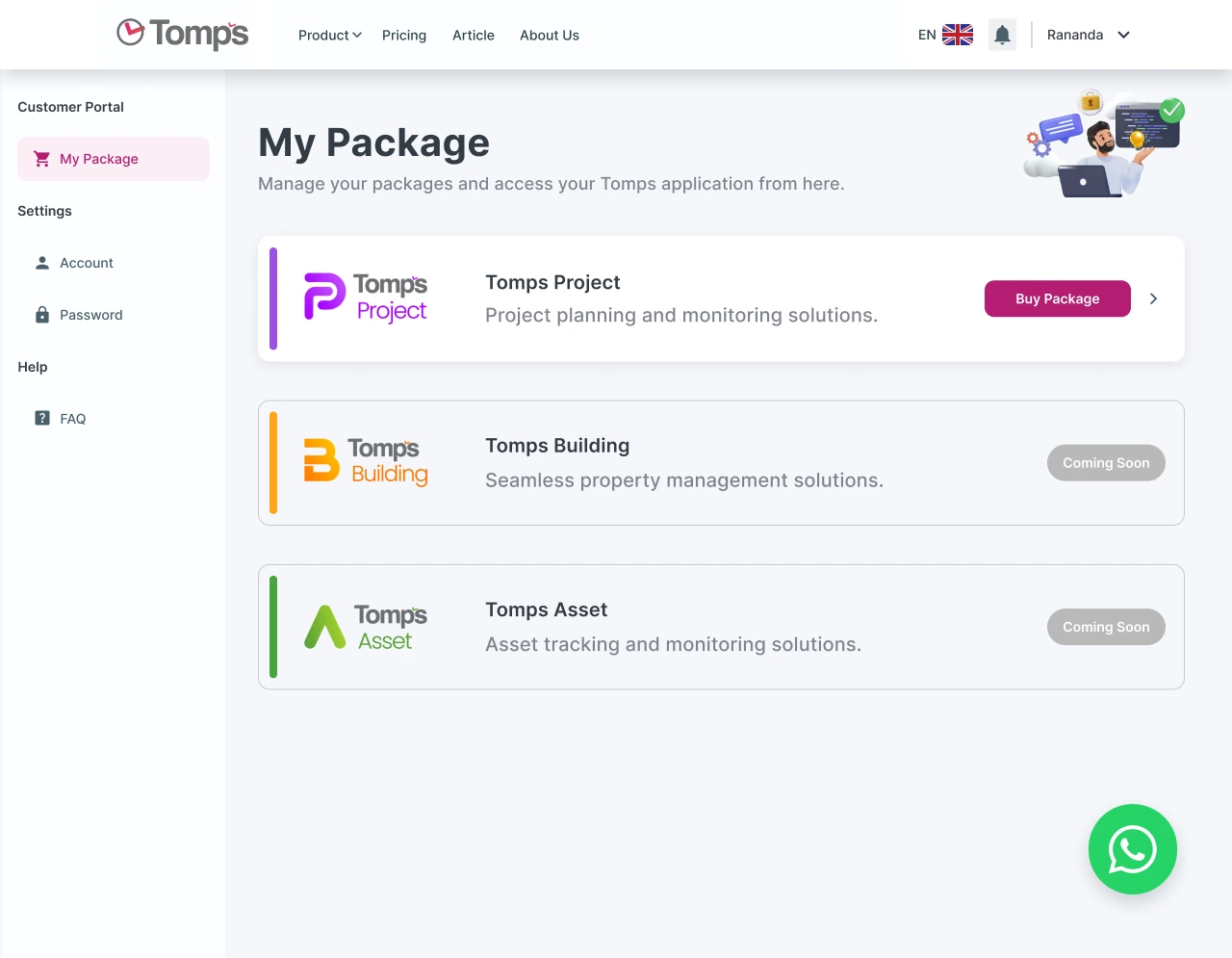
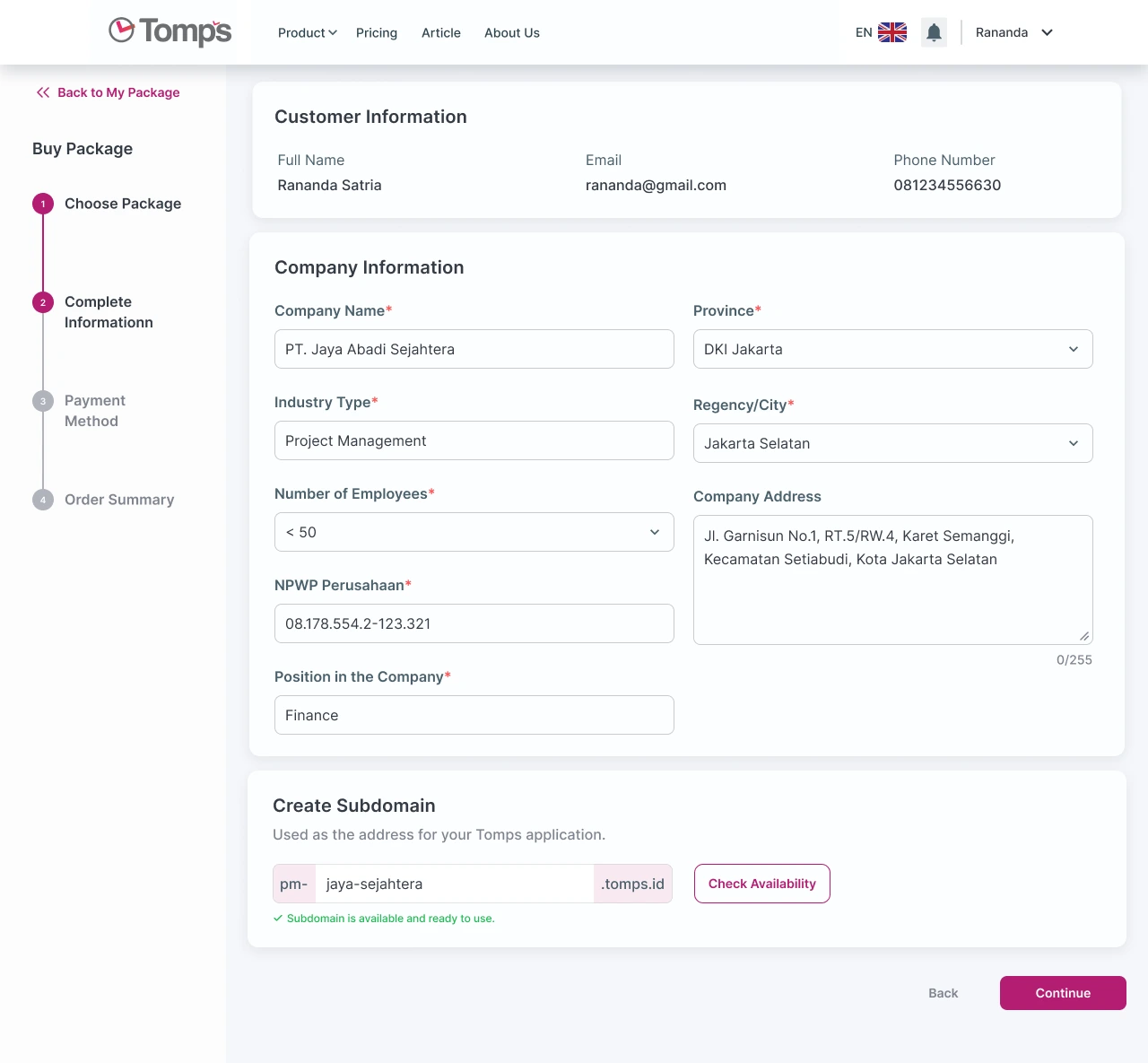
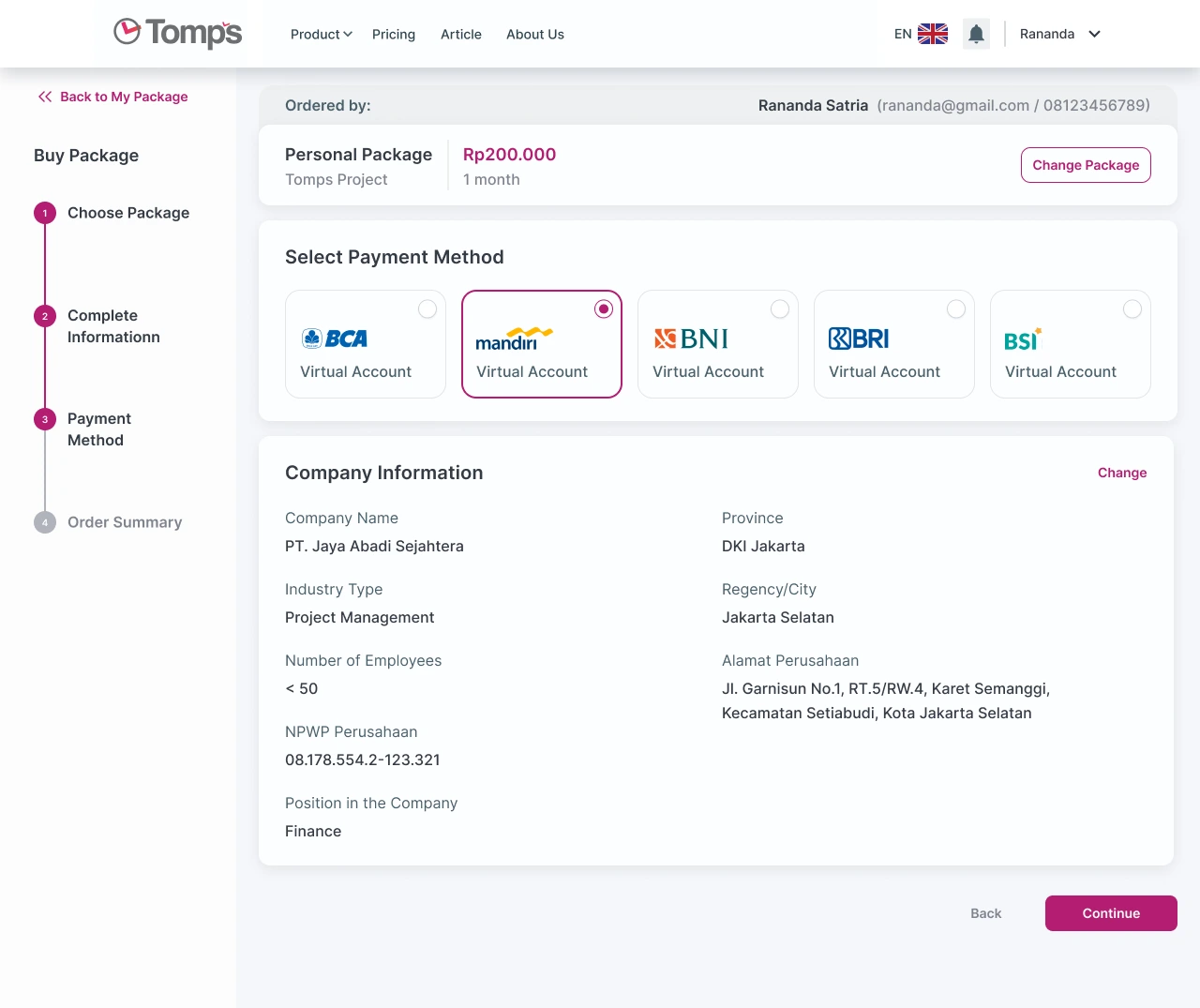
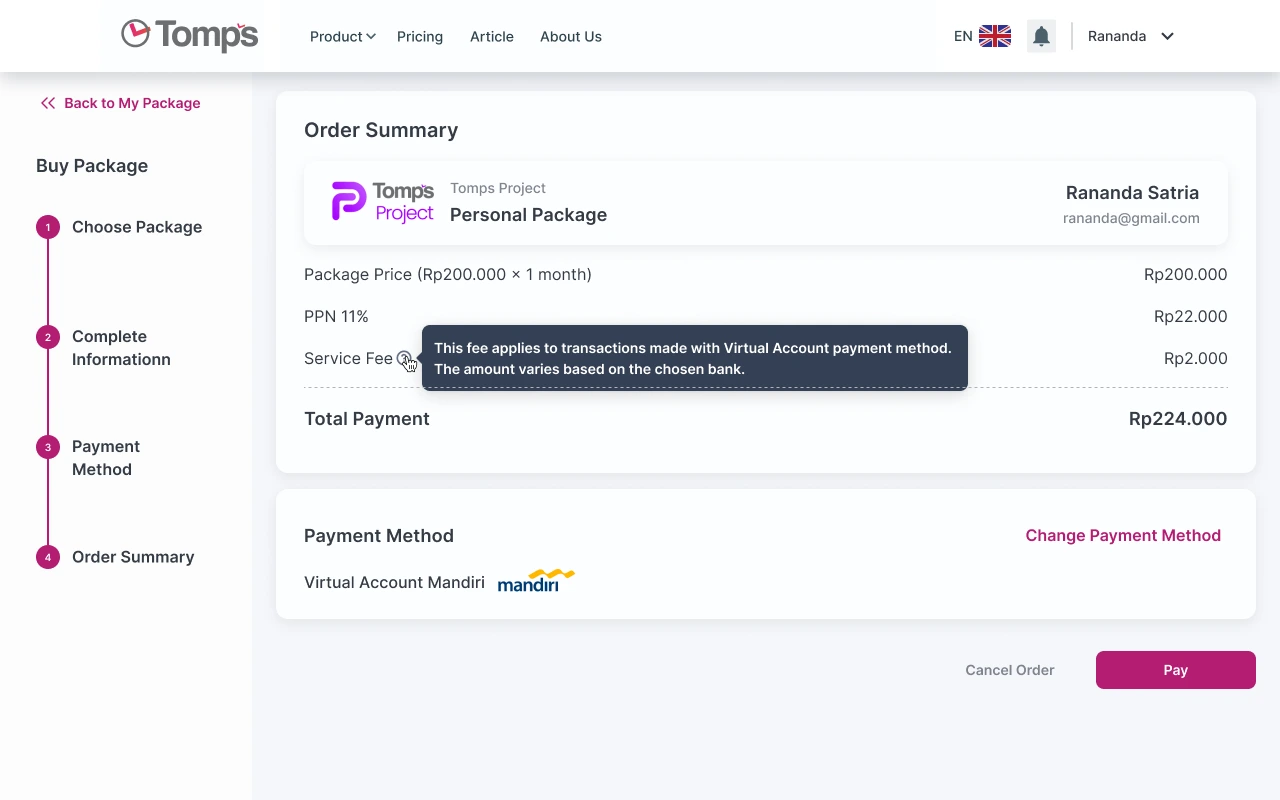

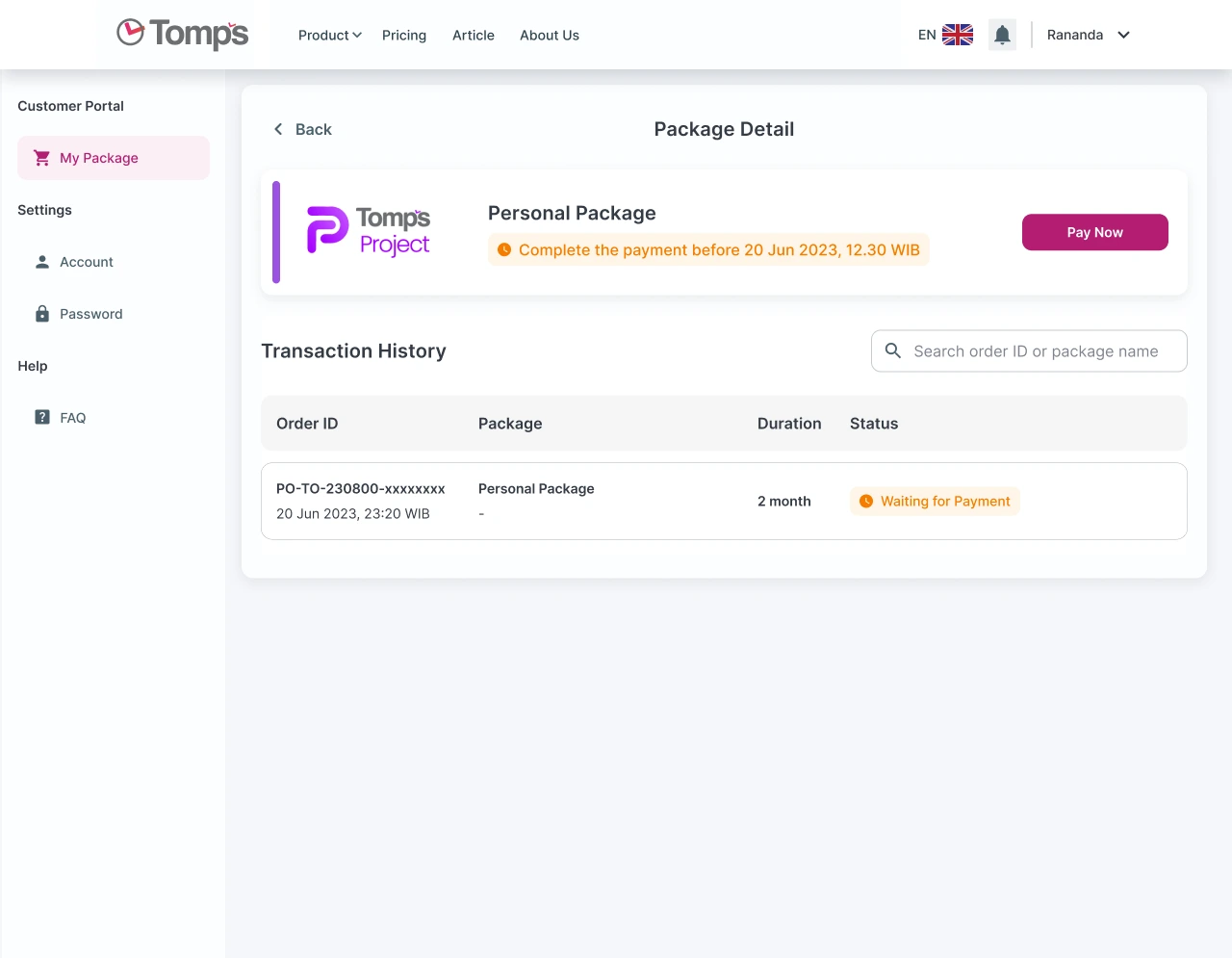
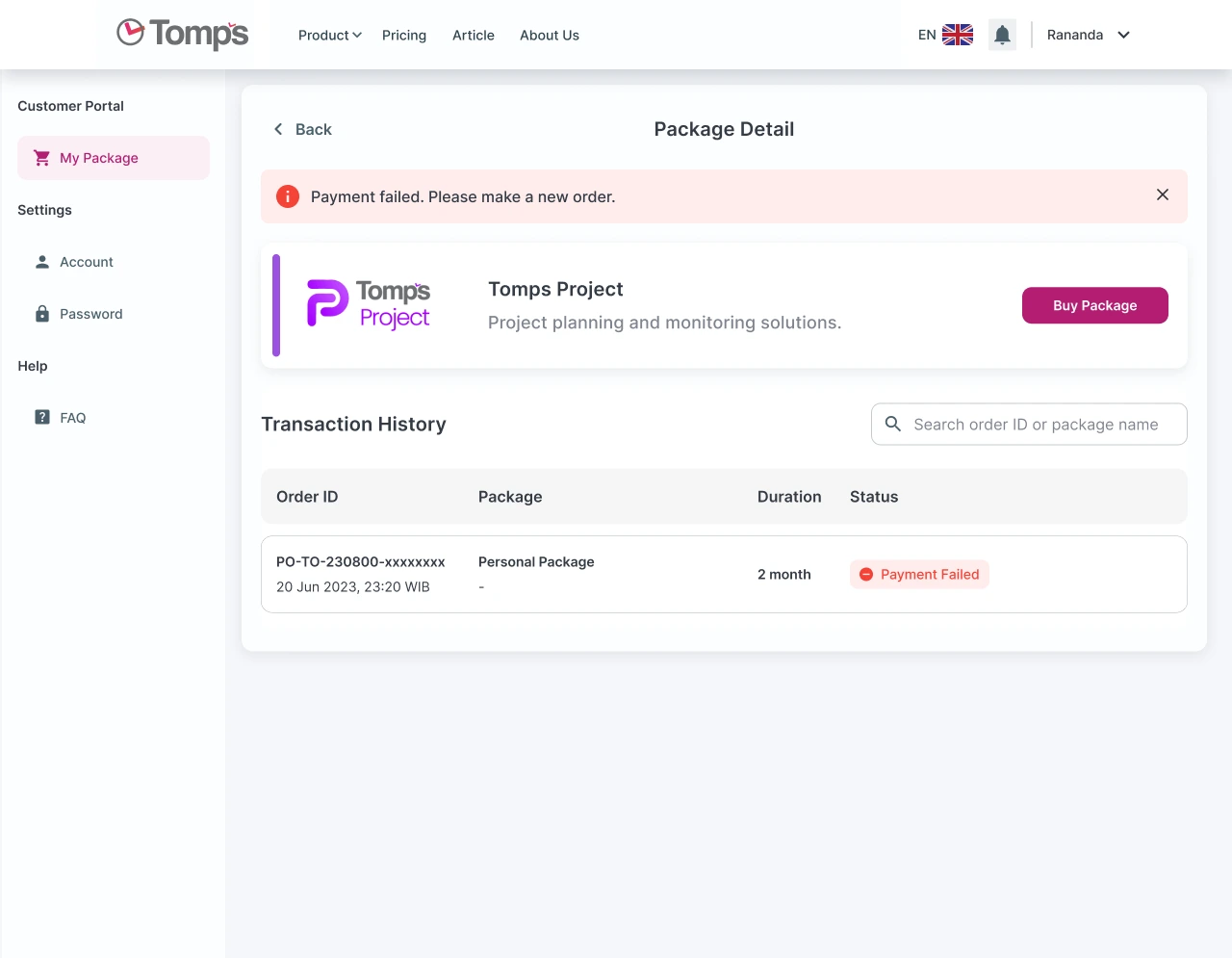
Tomps Saas Apps
Project Overview
Tomps SaaS Apps is a centralized web portal that serves as the primary access point for various company projects—including Tomps Building, Tomps Project, and Tomps Asset—implemented through a subscription-based model. Users can seamlessly create and manage their accounts, subscribe to tailored packages, and process secure online payments for subscription renewals or extensions. The system proactively notifies users as their subscription nears expiration, ensuring uninterrupted access to the full suite of applications and a cohesive experience across all connected services
Key Features
-
Admin CMS with Strapi:
- Leverages
Strapito power an intuitive content management system that curates and lists articles and technology news tailored toTomps, ensuring that users and administrators stay updated with the latest industry trends.
- Leverages
-
Product Management with SSO:
- Implements a robust
Single Sign-On(SSO) system to streamline access to theTompsproduct management tools, simplifying user authentication and ensuring secure, centralized access to product-related data and workflows.
- Implements a robust
-
Custom Payment Monitoring Portal:
- Provides a dedicated dashboard where users can effortlessly monitor payment transactions, review historical financial records, and check the status of every subscription package, offering full financial transparency and control.
-
Subscription Expiry Reminders:
- Automatically sends timely alerts to users when their subscription packages near expiration, helping them stay informed and ensuring uninterrupted access by prompting timely renewals.
Technologies and Stack
-
CMS Using Strapi Dashboard:
- Leverages
Strapito provide a user-friendly dashboard for managing and updating content, such as articles and news.
- Leverages
-
Microservices-Based Backend:
- Implements a modular architecture split into three focused services—authentication, billing, and CMS. Ensuring easier maintenance and independent scaling.
-
Core Backend with Node.js, Express.js, and Sequelize:
- Develops the main backend using
Node.jsandExpress.jsfor handling HTTP requests, withSequelizeas the ORM to streamline database interactions.
- Develops the main backend using
-
Push Notifications and Email Reminders:
- Uses
Firebaseto send push notifications andNodemailerto automate email reminders for payment updates and subscription expirations.
- Uses
-
Relational Database with PostgreSQL:
- Utilizes
PostgreSQLas the main database to store structured data reliably, ensuring robust data integrity, powerful querying capabilities, and ACID compliance across the platform.
- Utilizes
-
Efficient Caching with Redis:
- Implements
Redisas a caching layer to reduce the load on the primary database, accelerate frequently accessed queries, and improve overall system performance and responsiveness.
- Implements
-
Real-Time Updates via Socket Communication:
- Integrates
WebSockettechnology to deliver instantaneous backend-to-frontend updates, ensuring that key pages reflect live data changes and enhance user interactivity.
- Integrates
My Role and Responsibilities
-
CMS Strapi Backend:
- Updated and maintained the CMS backend built with
Strapito ensure a reliable and user-friendly experience for administrative users.
- Updated and maintained the CMS backend built with
-
Transaction History Management:
- Developed and enhanced features for tracking and displaying transaction history, providing administrators with clear insights into user activities and payment transactions over time.
-
Automated Notification System:
- Implemented push notifications using
Firebaseand email reminders throughNodemailerto alert users when their subscription package is nearing expiration or has already expired.
- Implemented push notifications using
-
Unit Testing and Quality Assurance:
- Implemented a comprehensive unit testing framework using
Mocha,Chai, andSinonto rigorously test all backend functionalities. - Achieved a minimum of 80% code coverage verified through
SonarQube, ensuring code reliability and facilitating smoother deployment cycles.
- Implemented a comprehensive unit testing framework using
-
Team Collaboration:
- Collaborated with front-end developers, QA teams, and the project manager via
Jirato coordinate tasks, track progress, and ensure clear communication throughout the project lifecycle.
- Collaborated with front-end developers, QA teams, and the project manager via
Get In Touch
For business inquiries, collaborations, or further discussion about my projects, please feel free to reach out via email at [email protected]. You can also follow my work and stay updated on the latest developments by connecting with me on GitHub, LinkedIn, and Instagram.
Stay Curious and Happy Coding !!
← Back to projects